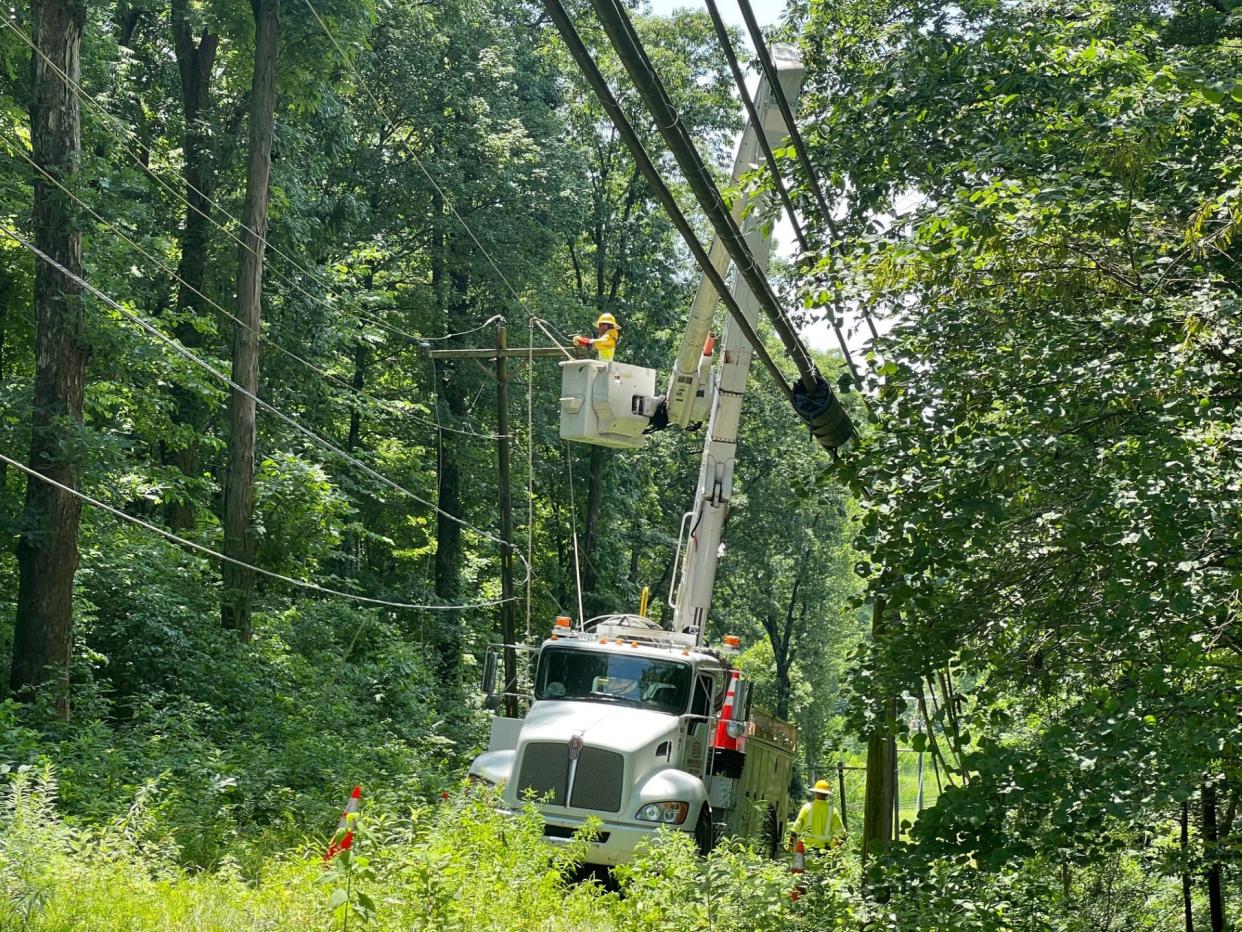Duke Energy: Indiana had most outages in recent storm since Hurricane Ike

About 330,000 of Duke Energy’s Indiana customers lost power last week, more than any time since Hurricane Ike in 2008.
More than 1 in 3 Duke customers lost power in the derecho, a widespread, fast-moving wind storm. The storms damaged more than 150 miles of Duke’s power lines and damaged or destroyed more than 200 utility poles.
The straight-line winds left more than 30,000 households in and around Bloomington without electricity. Some outages lasted five days.
Sign of things to come? Monroe County's response to June 29 derecho criticized
Unusual weather? Climate change impact?
Jason Puma, a meteorologist with the National Weather Service in Indianapolis, said temperatures over the long July 4 holiday were within the normal range. It’s not unusual to see thunderstorms and 90 degree temperatures in Indiana during summer, he said.
The weather service issues a severe thunderstorm warning if a storm brings hail with a diameter of at least one inch or wind gusts of at least 50 mph. So far this year, Puma said, the NWS in Indianapolis has issued 113 warnings, which seemed fairly normal to him for this time of year. Puma has been with the service in Indianapolis for more than 20 years.

Gabriel Filippelli, executive director of Indiana University’s Environmental Resilience Institute, said climate change is causing a “more turbulent atmosphere,” which means storms likely will increase in frequency and/or intensity.
Warmer air holds more water vapor, and it can come down as heavy rain, which Indiana has recently experienced, he said.
When communities try to make their infrastructure more resilient to bad weather, they must make upgrades that can withstand not just storms of today — but those that will happen decades from now.
Flood experts: Lack of data, foresight, political courage leave many cities unprepared
Buried power lines?
Filippelli said the state’s most recent outages were largely caused by trees and tree limbs falling on overhead power lines, which should serve as a reminder that most modern cities bury their power lines, making them almost invulnerable to storms.
Overhead power lines also are exposed to higher temperatures — they can lose up to 20% of the power they’re transporting — increasing the state’s need for power generation, he said.
Duke Energy spokesperson Angeline Protogere said the company has some of its 39,000 miles of cable underground and especially targets outage-prone areas. However, she said, putting all of it underground would cost customers too much. She also said high-voltage transmission lines, which are unlike the power lines in neighborhoods, are not generally buried.
Protogere also said burying cable does not protect it from all damage, and when underground cables are damaged, problems may be more difficult to isolate and more costly to fix.
Filippelli said modern technology should make it easier for utilities to pinpoint problem locations.
And, he said, some of the highest costs related to storms are often disregarded in the “too costly” calculation: Storm damage is not just about infrastructure, business losses or inconveniences. Some people rely on electricity for critical medical devices and extreme heat can cause health problems. He said he understands Duke’s cost concerns, but said outages can cost lives.
Protogere said the utility continually upgrades its system, including cutting back trees near power lines, and replacing wooden power poles with sturdier ones made of steel, which also provide better protection against insects.
The utility also has installed what it calls “self-healing” technology, which detects power outages and reroutes power to restore service faster or avoid the outage altogether. Protogere likened the technology to a GPS system that reroutes a driver to avoid a construction area or heavy traffic.
She said the system allowed Duke’s customers to avoid more than 80,000 hours of power outages last year. The service is being provided to about 13% of customers, she said, but the utility hopes to soon cover about two-thirds of its customers.
Despite those efforts, Protogere said, power interruptions are inevitable.
“We will never eliminate power outages altogether,” she said, “particularly when you have an event of this scale.”
Other solutions to power outages?
Filippelli urged Hoosiers to keep power banks at home to charge their cell phones so they can stay updated on emergency information.
Filippelli said as more consumers buy electric vehicles, they will be able to use the power stored in those vehicles to charge their homes. According to a recent column in the Washington Post, some of the newest electric vehicles can power a home for three days.
A more expensive solution, Filippelli said, involves solar panels and a battery wall, in a garage, for example. Those can power a home every evening until the battery runs out — and they can bridge interruptions brought on by a storm.
Boris Ladwig can be reached at bladwig@heraldt.com.
This article originally appeared on The Herald-Times: Indiana derecho knocks out power to 1 in 3 Duke Energy customers

